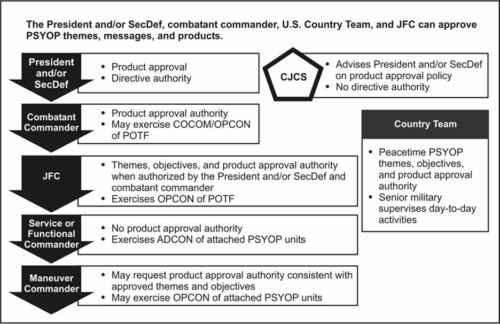Soldiers from the U.S. Army’s 350th Tactical Psychological Operations, 10th Mountain Division, drop leaflets over a village near Hawijah in Kirkuk province, Iraq, on March 6, 2008. The leaflets are intended to promote the idea of self-government to area residents. U.S. Air Force photo by Staff Sgt. Samuel Bendet (Released).
The supreme art of war is to subdue the enemy without fighting.”— Sun Tzu.
Psychological Operations (PSYOPS) are a fascinating and multifaceted field. While they have been associated with manipulation and deception, it is essential to recognize that they are not inherently good or bad. Instead, their impact depends on how they are applied and the context in which they operate. Outside the military, PSYOPS are frequently described as propaganda, but in reality, they are more nuanced.
In our hyper-connected world, information is power. Those who skillfully wield this power can influence thoughts, emotions, and actions. PSYOPS play a crucial role in military strategy, diplomacy, and intelligence. These operations aim to influence the emotions, motives, reasoning, and behavior of foreign governments, organizations, groups, and individuals. PSYOPS have played a significant role in shaping history and influencing the thoughts and actions of individuals and groups.
PSYOPS contribute to strategic goals. They can demoralize, influence decision making, build alliances, counter propaganda, and shape perceptions.

Historical Development
Sun Tzu’s The Art of War, written around the 5th century BC, emphasized the importance of psychological factors in achieving victory. Ancient leaders like Alexander the Great and Julius Caesar employed deception, propaganda, and psychological intimidation to demoralize enemies and maintain control over conquered territories.
The 20th century saw significant developments in PSYOPS due to global conflicts. World War I witnessed propaganda efforts by both the Allied and Central Powers. World War II further expanded PSYOPS, employing sophisticated techniques to manipulate enemy forces and civilian populations.
During World War I, both the Allied and Central Powers used propaganda to shape public opinion and maintain morale. The British established the War Propaganda Bureau, while the Germans set up a similar organization called the Zentralstelle für Heimatdienst.
During World War II countries employed sophisticated techniques to manipulate enemy forces and civilian populations. British “black” propaganda involved creating false German radio stations broadcasting deceptive information to demoralize enemy troops.
Five Notable Examples of PSYOPS:
Operation Mincemeat (WWII): British intelligence planted false documents on a deceased body, leading the Germans to believe that the Allied invasion would target Greece instead of Sicily.
Ghost Army (WWII): A unit of artists, designers, and sound engineers created inflatable tanks, fake radio transmissions, and other illusions to deceive German forces.
Operation Wandering Soul (Vietnam War): The U.S. broadcast eerie sounds and voices on loudspeakers to exploit Vietnamese cultural beliefs about restless spirits.
Radio Free Europe (Cold War): The CIA-funded station broadcast anti-Soviet messages to Eastern Europe, challenging communist narratives. Also, during the Cold War, leaflets dropped over Soviet-controlled areas highlighted Western consumer goods and freedoms.
Desert Storm Leaflets (Gulf War): Coalition forces dropped leaflets urging Iraqi soldiers to surrender, highlighting the futility of resistance.

A Blend of Art and Science
Successful PSYOPS are a blend of art and science. Their future lies in mastering new communication channels, staying ahead of technological shifts, and continually adapting to the psychology of their audiences. PSYOPS require meticulous planning, cultural awareness, and adaptability.
PSYOPS require thorough planning. This involves identifying the target audience, understanding their cultural context, and defining clear objectives. Planners must consider factors such as language, religion, social norms, and historical events that shape the audience’s worldview. Detailed plans outline the messages, channels, and timing for maximum impact.
Cultural sensitivity is paramount in PSYOPS. Different cultures interpret messages differently, and what works in one context may backfire in another. Understanding local customs, taboos, and symbols helps create relatable content. PSYOPS leverage cultural nuances to shape perceptions. They use narratives, symbols, and appeals that resonate with the target audience. Understanding cultural triggers helps create persuasive content.
PSYOPS must be able to adapt swiftly. Flexibility allows them to respond to changing situations. Adapting to unforeseen events, shifts in public opinion, or emerging threats ensures relevance. PSYOPS teams must adjust their tactics based on real-time feedback and intelligence.

Digital Age
The digital age has transformed PSYOPS. Social media platforms provide direct access to global audiences. PSYOPS teams create online personas, disseminate information, and influence discussions. Disinformation campaigns, memes, and targeted ads are part of this arsenal. Monitoring social media sentiment helps adjust strategies.
Understanding how people consume digital content is crucial. Confirmation bias, emotional triggers, and echo chambers play a role. PSYOPS must craft messages that resonate emotionally and align with existing beliefs. Analyzing data on user engagement guides their efforts. Their future lies in adapting to new communication channels and understanding the psychology of digital audiences.
PSYOPS in Daily Life
PSYOPS, also known as strategic communication, are a subtle yet powerful part of our daily lives. These operations aim to influence the perceptions, beliefs, and behaviors of targeted audiences, often without their conscious awareness.
In the realm of advertising and marketing, advertisements employ psychological techniques to sway consumer decisions. From catchy jingles to emotional appeals, advertisers manipulate our desires and preferences. Product packaging, color choices, and brand logos subtly impact our perception of quality and trustworthiness.

Social media platforms are fertile ground for PSYOPS. Algorithms tailor content to our interests, reinforcing existing beliefs and shaping our worldview. Influencers subtly endorse products, lifestyles, or ideologies, affecting our choices and opinions.
Media outlets frame stories, emphasizing certain aspects and downplaying others. This influences public opinion and political views. Headlines, images, and soundbites evoke emotions, shaping our understanding of events.
In personal relationships, we use persuasion techniques such as reciprocity, social proof, and scarcity to influence others’ decisions. We tailor our communication based on the listener’s personality, emotions, and vulnerabilities.
Political campaigns employ PSYOPS to sway voters. They create narratives, spread rumors, and manipulate public sentiment. Debates, speeches, and slogans aim to evoke specific emotions and reinforce party loyalty.
In business negotiations and conflict resolution, understanding the other party’s psychology helps achieve favorable outcomes. Conflict resolution relies on empathy, active listening, and persuasive communication.
Teachers use psychological techniques to engage students, enhance learning, and manage behavior. Curriculum design influences students’ values, beliefs, and critical thinking.
We consciously or unconsciously curate our online profiles to project a desired image. Body language, tone, and choice of words convey specific messages.
In healthcare and wellness, placebos demonstrate the power of belief. Our mindset affects healing and recovery. Health campaigns use fear appeals or positive reinforcement to promote healthy behaviors.
Parents use rewards, punishments, and modeling to shape their children’s behavior. Bedtime stories, fairy tales, and cultural narratives influence children’s values.
PSYOPS are not inherently negative; they can serve positive purposes too. Being aware of these subtle influences empowers us to make informed choices and navigate the complex web of PSYOPS in our daily lives. Whether we realize it or not, we all employ elements of PSYOPS in our daily interactions.
Final Thoughts
PSYOPS are a double-edged sword. When wielded responsibly, they can achieve strategic goals. However, their misuse can have severe consequences. Understanding their nuances is essential for informed decision-making.
*The views and opinions expressed on this website are solely those of the original authors and contributors. These views and opinions do not necessarily represent those of Spotter Up Magazine, the administrative staff, and/or any/all contributors to this site.

